RBS 2012 Annual Report Download - page 363
Download and view the complete annual report
Please find page 363 of the 2012 RBS annual report below. You can navigate through the pages in the report by either clicking on the pages listed below, or by using the keyword search tool below to find specific information within the annual report.-
 1
1 -
 2
2 -
 3
3 -
 4
4 -
 5
5 -
 6
6 -
 7
7 -
 8
8 -
 9
9 -
 10
10 -
 11
11 -
 12
12 -
 13
13 -
 14
14 -
 15
15 -
 16
16 -
 17
17 -
 18
18 -
 19
19 -
 20
20 -
 21
21 -
 22
22 -
 23
23 -
 24
24 -
 25
25 -
 26
26 -
 27
27 -
 28
28 -
 29
29 -
 30
30 -
 31
31 -
 32
32 -
 33
33 -
 34
34 -
 35
35 -
 36
36 -
 37
37 -
 38
38 -
 39
39 -
 40
40 -
 41
41 -
 42
42 -
 43
43 -
 44
44 -
 45
45 -
 46
46 -
 47
47 -
 48
48 -
 49
49 -
 50
50 -
 51
51 -
 52
52 -
 53
53 -
 54
54 -
 55
55 -
 56
56 -
 57
57 -
 58
58 -
 59
59 -
 60
60 -
 61
61 -
 62
62 -
 63
63 -
 64
64 -
 65
65 -
 66
66 -
 67
67 -
 68
68 -
 69
69 -
 70
70 -
 71
71 -
 72
72 -
 73
73 -
 74
74 -
 75
75 -
 76
76 -
 77
77 -
 78
78 -
 79
79 -
 80
80 -
 81
81 -
 82
82 -
 83
83 -
 84
84 -
 85
85 -
 86
86 -
 87
87 -
 88
88 -
 89
89 -
 90
90 -
 91
91 -
 92
92 -
 93
93 -
 94
94 -
 95
95 -
 96
96 -
 97
97 -
 98
98 -
 99
99 -
 100
100 -
 101
101 -
 102
102 -
 103
103 -
 104
104 -
 105
105 -
 106
106 -
 107
107 -
 108
108 -
 109
109 -
 110
110 -
 111
111 -
 112
112 -
 113
113 -
 114
114 -
 115
115 -
 116
116 -
 117
117 -
 118
118 -
 119
119 -
 120
120 -
 121
121 -
 122
122 -
 123
123 -
 124
124 -
 125
125 -
 126
126 -
 127
127 -
 128
128 -
 129
129 -
 130
130 -
 131
131 -
 132
132 -
 133
133 -
 134
134 -
 135
135 -
 136
136 -
 137
137 -
 138
138 -
 139
139 -
 140
140 -
 141
141 -
 142
142 -
 143
143 -
 144
144 -
 145
145 -
 146
146 -
 147
147 -
 148
148 -
 149
149 -
 150
150 -
 151
151 -
 152
152 -
 153
153 -
 154
154 -
 155
155 -
 156
156 -
 157
157 -
 158
158 -
 159
159 -
 160
160 -
 161
161 -
 162
162 -
 163
163 -
 164
164 -
 165
165 -
 166
166 -
 167
167 -
 168
168 -
 169
169 -
 170
170 -
 171
171 -
 172
172 -
 173
173 -
 174
174 -
 175
175 -
 176
176 -
 177
177 -
 178
178 -
 179
179 -
 180
180 -
 181
181 -
 182
182 -
 183
183 -
 184
184 -
 185
185 -
 186
186 -
 187
187 -
 188
188 -
 189
189 -
 190
190 -
 191
191 -
 192
192 -
 193
193 -
 194
194 -
 195
195 -
 196
196 -
 197
197 -
 198
198 -
 199
199 -
 200
200 -
 201
201 -
 202
202 -
 203
203 -
 204
204 -
 205
205 -
 206
206 -
 207
207 -
 208
208 -
 209
209 -
 210
210 -
 211
211 -
 212
212 -
 213
213 -
 214
214 -
 215
215 -
 216
216 -
 217
217 -
 218
218 -
 219
219 -
 220
220 -
 221
221 -
 222
222 -
 223
223 -
 224
224 -
 225
225 -
 226
226 -
 227
227 -
 228
228 -
 229
229 -
 230
230 -
 231
231 -
 232
232 -
 233
233 -
 234
234 -
 235
235 -
 236
236 -
 237
237 -
 238
238 -
 239
239 -
 240
240 -
 241
241 -
 242
242 -
 243
243 -
 244
244 -
 245
245 -
 246
246 -
 247
247 -
 248
248 -
 249
249 -
 250
250 -
 251
251 -
 252
252 -
 253
253 -
 254
254 -
 255
255 -
 256
256 -
 257
257 -
 258
258 -
 259
259 -
 260
260 -
 261
261 -
 262
262 -
 263
263 -
 264
264 -
 265
265 -
 266
266 -
 267
267 -
 268
268 -
 269
269 -
 270
270 -
 271
271 -
 272
272 -
 273
273 -
 274
274 -
 275
275 -
 276
276 -
 277
277 -
 278
278 -
 279
279 -
 280
280 -
 281
281 -
 282
282 -
 283
283 -
 284
284 -
 285
285 -
 286
286 -
 287
287 -
 288
288 -
 289
289 -
 290
290 -
 291
291 -
 292
292 -
 293
293 -
 294
294 -
 295
295 -
 296
296 -
 297
297 -
 298
298 -
 299
299 -
 300
300 -
 301
301 -
 302
302 -
 303
303 -
 304
304 -
 305
305 -
 306
306 -
 307
307 -
 308
308 -
 309
309 -
 310
310 -
 311
311 -
 312
312 -
 313
313 -
 314
314 -
 315
315 -
 316
316 -
 317
317 -
 318
318 -
 319
319 -
 320
320 -
 321
321 -
 322
322 -
 323
323 -
 324
324 -
 325
325 -
 326
326 -
 327
327 -
 328
328 -
 329
329 -
 330
330 -
 331
331 -
 332
332 -
 333
333 -
 334
334 -
 335
335 -
 336
336 -
 337
337 -
 338
338 -
 339
339 -
 340
340 -
 341
341 -
 342
342 -
 343
343 -
 344
344 -
 345
345 -
 346
346 -
 347
347 -
 348
348 -
 349
349 -
 350
350 -
 351
351 -
 352
352 -
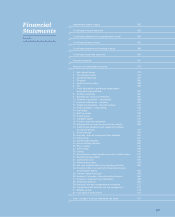 353
353 -
 354
354 -
 355
355 -
 356
356 -
 357
357 -
 358
358 -
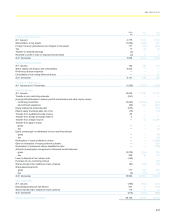 359
359 -
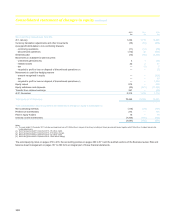 360
360 -
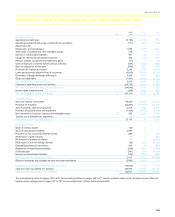 361
361 -
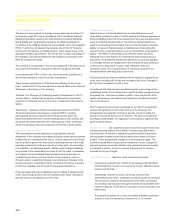 362
362 -
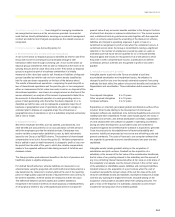 363
363 -
 364
364 -
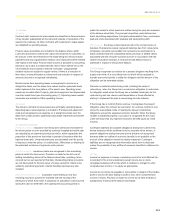 365
365 -
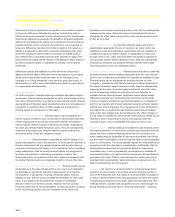 366
366 -
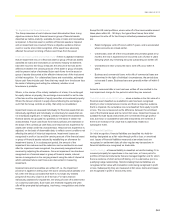 367
367 -
 368
368 -
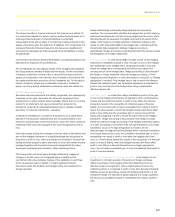 369
369 -
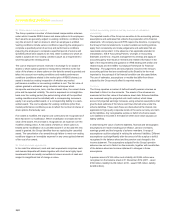 370
370 -
 371
371 -
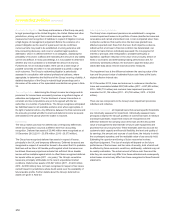 372
372 -
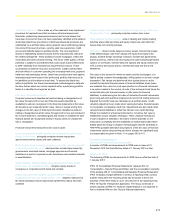 373
373 -
 374
374 -
 375
375 -
 376
376 -
 377
377 -
 378
378 -
 379
379 -
 380
380 -
 381
381 -
 382
382 -
 383
383 -
 384
384 -
 385
385 -
 386
386 -
 387
387 -
 388
388 -
 389
389 -
 390
390 -
 391
391 -
 392
392 -
 393
393 -
 394
394 -
 395
395 -
 396
396 -
 397
397 -
 398
398 -
 399
399 -
 400
400 -
 401
401 -
 402
402 -
 403
403 -
 404
404 -
 405
405 -
 406
406 -
 407
407 -
 408
408 -
 409
409 -
 410
410 -
 411
411 -
 412
412 -
 413
413 -
 414
414 -
 415
415 -
 416
416 -
 417
417 -
 418
418 -
 419
419 -
 420
420 -
 421
421 -
 422
422 -
 423
423 -
 424
424 -
 425
425 -
 426
426 -
 427
427 -
 428
428 -
 429
429 -
 430
430 -
 431
431 -
 432
432 -
 433
433 -
 434
434 -
 435
435 -
 436
436 -
 437
437 -
 438
438 -
 439
439 -
 440
440 -
 441
441 -
 442
442 -
 443
443 -
 444
444 -
 445
445 -
 446
446 -
 447
447 -
 448
448 -
 449
449 -
 450
450 -
 451
451 -
 452
452 -
 453
453 -
 454
454 -
 455
455 -
 456
456 -
 457
457 -
 458
458 -
 459
459 -
 460
460 -
 461
461 -
 462
462 -
 463
463 -
 464
464 -
 465
465 -
 466
466 -
 467
467 -
 468
468 -
 469
469 -
 470
470 -
 471
471 -
 472
472 -
 473
473 -
 474
474 -
 475
475 -
 476
476 -
 477
477 -
 478
478 -
 479
479 -
 480
480 -
 481
481 -
 482
482 -
 483
483 -
 484
484 -
 485
485 -
 486
486 -
 487
487 -
 488
488 -
 489
489 -
 490
490 -
 491
491 -
 492
492 -
 493
493 -
 494
494 -
 495
495 -
 496
496 -
 497
497 -
 498
498 -
 499
499 -
 500
500 -
 501
501 -
 502
502 -
 503
503 -
 504
504 -
 505
505 -
 506
506 -
 507
507 -
 508
508 -
 509
509 -
 510
510 -
 511
511 -
 512
512 -
 513
513 -
 514
514 -
 515
515 -
 516
516 -
 517
517 -
 518
518 -
 519
519 -
 520
520 -
 521
521 -
 522
522 -
 523
523 -
 524
524 -
 525
525 -
 526
526 -
 527
527 -
 528
528 -
 529
529 -
 530
530 -
 531
531 -
 532
532 -
 533
533 -
 534
534 -
 535
535 -
 536
536 -
 537
537 -
 538
538 -
 539
539 -
 540
540 -
 541
541 -
 542
542 -
 543
543
 |
 |

RBS GROUP 2012
361
Investment management fees - fees charged for managing investments
are recognised as revenue as the services are provided. Incremental
costs that are directly attributable to securing an investment management
contract are deferred and charged as expense as the related revenue is
recognised.
Insurance premiums - see Accounting policy 12.
4. Assets held for sale and discontinued operations
A non-current asset (or disposal group) is classified as held for sale if the
Group will recover its carrying amount principally through a sale
transaction rather than through continuing use. A non-current asset (or
disposal group) classified as held for sale is measured at the lower of its
carrying amount and fair value less costs to sell. If the asset (or disposal
group) is acquired as part of a business combination it is initially
measured at fair value less costs to sell. Assets and liabilities of disposal
groups classified as held for sale and non-current assets classified as
held for sale are shown separately on the face of the balance sheet.
The results of discontinued operations - comprising the post-tax profit or
loss of discontinued operations and the post-tax gain or loss recognised
either on measurement to fair value less costs to sell or on disposal of the
discontinued operation - are shown as a single amount on the face of the
income statement; an analysis of this amount is presented in Note 20 on
the accounts. A discontinued operation is a cash generating unit or a
group of cash generating units that either has been disposed of, or is
classified as held for sale, and (a) represents a separate major line of
business or geographical area of operations, (b) is part of a single co-
ordinated plan to dispose of a separate major line of business or
geographical area of operations or (c) is a subsidiary acquired exclusively
with a view to resale.
5. Employee benefits
Short-term employee benefits, such as salaries, paid absences, and
other benefits are accounted for on an accruals basis over the period in
which the employees provide the related services. Employees may
receive variable compensation satisfied by cash, by debt instruments
issued by the Group or by RBSG shares. The treatment of share-based
compensation is set out in Accounting policy 25. Variable compensation
that is settled in cash or debt instruments is charged to profit or loss over
the period from the start of the year to which the variable compensation
relates to the expected settlement date taking account of forfeiture and
clawback criteria.
The Group provides post-retirement benefits in the form of pensions and
healthcare plans to eligible employees.
For defined benefit schemes, scheme liabilities are measured on an
actuarial basis using the projected unit credit method and discounted at a
rate determined by reference to market yields at the end of the reporting
period on high quality corporate bonds of equivalent term and currency to
the scheme liabilities. Scheme assets are measured at their fair value.
The difference between scheme assets and scheme liabilities is
recognised in the balance sheet as an asset (surplus) or liability (deficit).
A net surplus is limited to any unrecognised past service cost plus the
present value of any economic benefits available to the Group in the form
of refunds from the plan or reduced contributions to it. The current service
cost, curtailments and any past service costs together with the expected
return on scheme assets less the unwinding of the discount on scheme
liabilities are charged to operating expenses. A gain or loss on a
curtailment is recognised in profit or loss when the curtailment occurs. A
curtailment occurs when the Group is committed to making a significant
reduction in the number of employees covered by a plan or a plan is
amended such that future service qualifies for no or reduced benefits.
Actuarial gains and losses are recognised in full in the period in which
they arise in other comprehensive income. Contributions to defined
contribution pension schemes are recognised in profit or loss when
payable.
6. Intangible assets and goodwill
Intangible assets acquired by the Group are stated at cost less
accumulated amortisation and impairment losses. Amortisation is
charged to profit or loss over the assets' estimated economic lives using
methods that best reflect the pattern of economic benefits and included in
Depreciation and amortisation. These estimated useful economic lives
are:
Core deposit intangibles 6 to 10 years
Other acquired intangibles 5 to 10 years
Computer software 3 to 12 years
Expenditure on internally generated goodwill and brands is written-off as
incurred. Direct costs relating to the development of internal-use
computer software are capitalised once technical feasibility and economic
viability have been established. These costs include payroll, the costs of
materials and services, and directly attributable overheads. Capitalisation
of costs ceases when the software is capable of operating as intended.
During and after development, accumulated costs are reviewed for
impairment against the benefits that the software is expected to generate.
Costs incurred prior to the establishment of technical feasibility and
economic viability are expensed as incurred as are all training costs and
general overheads. The costs of licences to use computer software that
are expected to generate economic benefits beyond one year are also
capitalised.
Intangible assets include goodwill arising on the acquisition of
subsidiaries and joint ventures. Goodwill on the acquisition of a
subsidiary is the excess of the fair value of the consideration transferred,
the fair value of any existing interest in the subsidiary and the amount of
any non-controlling interest measured either at fair value or at its share of
the subsidiary’s net assets over the Group's interest in the net fair value
of the subsidiary’s identifiable assets, liabilities and contingent liabilities.
Goodwill arises on the acquisition of a joint venture when the cost of
investment exceeds the Group’s share of the net fair value of the joint
venture’s identifiable assets and liabilities. Goodwill is measured at initial
cost less any subsequent impairment losses. Goodwill arising on the
acquisition of associates is included within their carrying amounts. The
gain or loss on the disposal of a subsidiary, associate or joint venture
includes the carrying value of any related goodwill.
